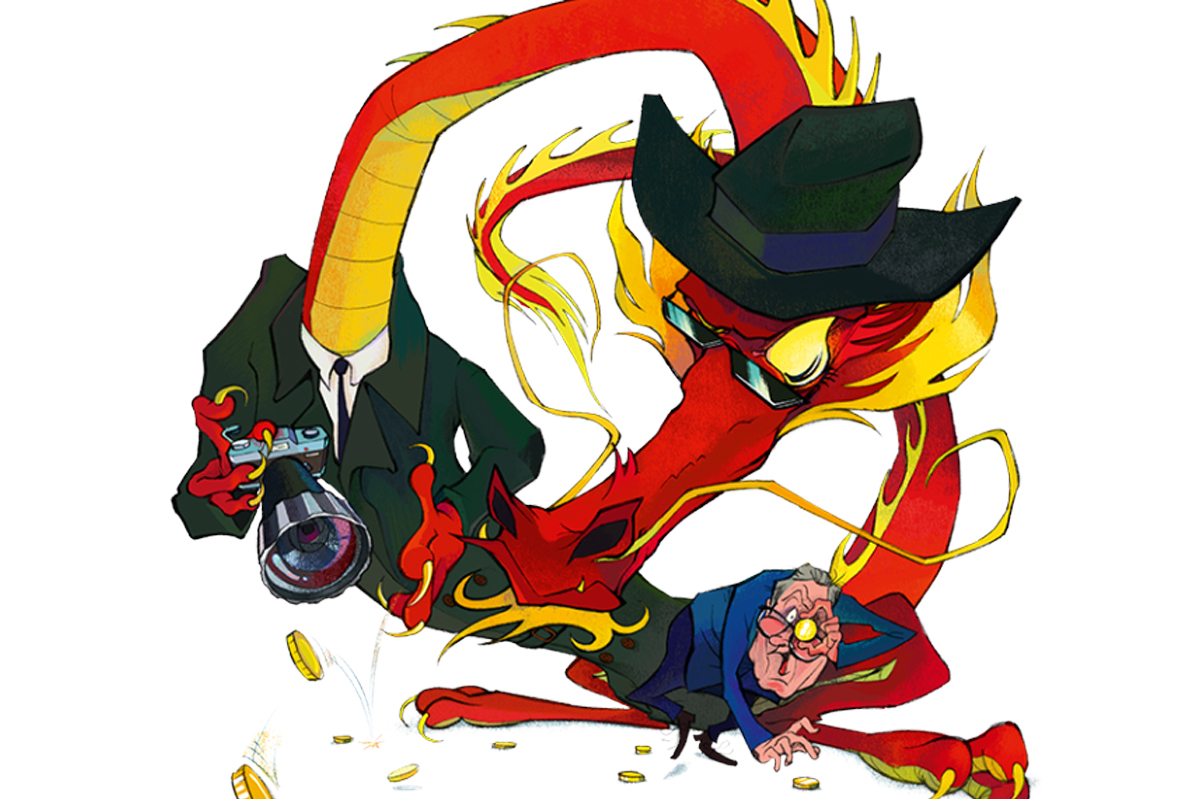Few people embody the ideal of scientific excellence as much as Albert Einstein. Each year a Berlin-based foundation bearing his name hands out awards for the sort of research that might have made him proud. This week, the individual prize went to Elisabeth Bik, not a conventional mastermind, but a sleuth — a dogged Dutch researcher who abandoned a career at a biomedical startup for one exposing scientific fraud.
That the Einstein Foundation chose to award Bik is testament not only to the impact of her detective work, but also to the way an epidemic of fake science is shaking the scientific establishment. “I have a very strong sense that I’m right. I see these problems and I want to convince people there’s fraud in science,” she said on receiving the award. “What fuels me is anger at people who cheat.”
Retractions provide a glimpse of the scale of the problem
Sometimes forgeries are so blatant they are comical. In one Chinese research paper into prostate cancer, 50 percent of the patients named were women — who, of course, do not have prostate glands. Other fakes are much more difficult to spot. “For every paper we catch there must be ten others that we miss because they were a little bit smarter in generating these papers,” says Bik.
She investigates China-based “paper mills” — outfits that churn out fake academic papers to order, manipulating and reusing sections of the same images and passing them off as original research. “They were charging up to $5,000 for a paper, and the paper mill advertisements on Chinese social media are so blatant that nobody seems to care about them,” she says. In China, clinicians have to publish a certain number of research papers in order to gain promotion, and for many the easiest thing to do is to commission one from the country’s burgeoning paper mill industry. Bik traced around 400 papers to the same mill, which handled submissions, obtained peer reviews and signed copyright consent forms as part of the service.
On the surface at least, China is well on the way to achieving President Xi Jinping’s goal of becoming a scientific superpower. Since 2017, it has published more scientific papers per year than any other country, while also leading the world in the number of citations, usually regarded as a measure of a paper’s impact. The problem is that much of this research is decidedly dodgy. In its rush for global dominance, the Chinese Communist Party has sacrificed quality for quantity, enabling large-scale fraud which threatens to undermine trust in the entire process of scientific publication.
‘The submission of suspected fake research papers, also often associated with fake authorship, is growing and threatens to overwhelm the editorial processes of a significant number of journals,” warned a joint investigation by the Committee on Publication Ethics, which aims to raise standards in scholarly publishing, and STM, a publishing industry trade body.
Retractions (when a scientific journal withdraws a study because of suspicions of misconduct) provide a glimpse of the scale of the problem. A survey by Nature magazine found, that out of nearly 14,000 retraction notices issued by scientific journals last year, some three-quarters involved a Chinese author. Nearly half of the retracted papers in a database compiled by Crossref, a US non-profit, and the Retraction Watch blog, were from China.
Scientific publishing is a multi-billion dollar business, and Bik believes that too often journals have been willing to look the other way, rather than retract questionable papers. Fraudsters shop around their papers between publishers and certain journals gain a reputation as an easy touch. China is an important market for academic journals, and many are nervous about falling foul of the CCP. “Nobody dares to question the Chinese government, not even journals in the US,” says Bik. “It’s just weird. Journals are sometimes weak. They won’t retract.”
I met Bik, who is based in California, at a coffee shop in London’s St. Katharine Docks, while I was doing research for my book Vampire State: The Rise and Fall of the Chinese Economy. She was on a speaking tour. Her work now attracts a strong following among scientists who are deeply concerned about the explosion in fraud.
She explained how in another case, she had questioned sixty-three papers authored by Cao Xuetao, a top immunologist, president of Nankai University in Tianjin and an academician at the influential Chinese Academy of Engineering. Bik’s accusations generated an international outcry, but a Chinese government investigation found no serious misconduct, saying that while Cao, a long-standing CCP member and major general in the People’s Liberation Army, had “misused pictures, reflecting the lack of strict laboratory management,” there was no fraud or plagiarism. The investigation dismissed Bik’s allegations as “questions on the internet.”
Bik was appalled. She tweeted:
Most of these concerns appear to be more than just errors. These duplications did not happen by honest mistakes. Rather, they suggest an “intention to mislead.”
Bik reckons that since 2014 she has analyzed more than 100,000 papers and found evidence of cheating in 6,500 of them. She believes this barely scratches the surface. She jokes that she uses her “pattern-matching eyes and lots of caffeine” in her dogged search for images which have been reused and reported as results from different experiments or where parts have been rotated, flipped, stretched or otherwise Photoshopped to give the appearance of “new” data. “There’s a thrill in finding something,” she says. “And it just makes me angry that people do misconduct in science, because for me science is about finding the truth.”
There was a rare insight into the perverse incentives placed on China’s research in an investigation by Caixin, a Chinese business publication. It found that advancement and funding were tied to hitting quotas of published articles, which meant that “panic, worry and despair [were] gripping Chinese young researchers.” A single innovative article might be split into several smaller ones to increase the total quantity of publishing. Researchers were encouraged to duplicate work, turning out “padding papers” and pressured to “publish for the sake of publishing.” When it came to peer reviews of research, “relationships and personal favors were mixed in.”
The Chinese government claims it’s clamping down on academic fraud
Academic institutions routinely pay researchers bonuses — often amounting to tens of thousands of dollars — for publishing papers in the world’s most prestigious scientific journals. “I had no choice but to commit misconduct,” said one researcher at an elite Chinese university, whose anonymous interview was among several published earlier this year by the journal Research Ethics. They said they felt compelled to cheat to hit research targets and protect their jobs. They used “paper mill” services to write papers, falsified data, plagiarized, exploited students without offering authorship and bribed journal editors.
There are other ways in which academic research is subverted. According to Retraction Watch, Thomas Ameyaw-Brobbey, a former assistant professor of international relations at Yibin University in Sichuan, was forced to retract a paper on the Covid-19 pandemic because it did not “paint a good picture of the Chinese government.” Ameyaw-Brobbey, who is now working in Ghana, published a paper in the Journal of International Studies in which he discussed the effect of the pandemic on the global image of China. After the paper appeared, he was hauled before the university authorities, who demanded he retract the paper and then fired him from his job.
Chinese scientists themselves recognize that the strength of China’s research is in implementation rather than innovation, which it has largely left to others. It has progressed in applied research and product development, rather than basic science — focusing on building upon existing know-how, which it has acquired from others by all available means, including theft. Chinese scientists have also relied heavily on collaborative research with Western scientists — which features disproportionately among its most highly cited papers — but many of these tie-ups are coming under much closer scrutiny in the West.
Ye Yujiang, head of the Department of Basic Research at the Ministry of Science and Technology, has blamed China’s weakness in technologies such as chips, computer operating systems and aircraft engines on its inadequacy in basic theoretical research. A report by a prominent Peking University think tank observed that China still spends much less on basic research than the United States. In an unusually frank review of China’s technological weaknesses, the report, which was deleted a week after it was posted online, said, “China’s overall technological strength has gradually increased… However, China still has a long way to go from being a quantitatively strong country in science and technology to being a qualitatively strong country in science and technology.”
Bik worries that artificial intelligence might turbocharge academic fraud. “AI changes the game,” she says. “I’m particularly concerned about imagery. Texts can be fact-checked to some extent.” The paper mills are quick on their feet and already new business models are emerging. “They can generate images that look realistic — of cells or tissue that look realistic enough to pass off for real. And those are unique, and we can no longer say, ‘Aha! It must be a paper mill.’ We don’t have that smoking gun anymore.”
The Chinese government claims it’s clamping down on academic fraud. Earlier this year, the Ministry of Education ordered a national audit of retracted papers. It demanded universities submit a comprehensive list of all academic articles retracted from English and Chinese language journals in the past three years and investigate cases involving misconduct. The move was met with widespread skepticism, since cheating is so deeply ingrained in the system, but does suggest that the CCP at least recognizes the damage being done to the image of Chinese science and the threat posed to Xi’s goal of creating a self-sustaining innovation economy.
“If the Chinese government does not do something very dramatic about these paper mills, they are going in the end to hurt their own reputation because now people are under the impression that all papers from China are fake,” says Bik. “That is also not the case, there is also good science, but the good have to suffer from the reputation that the bad people have set up.”
Already some journals’ editors are having trouble getting peer reviewers for any papers from China because of fears they might turn out to be fake. There is a real danger that Chinese science loses its credibility and is seen as just another example of the CCP’s deeply ingrained counterfeit culture.


























Leave a Reply